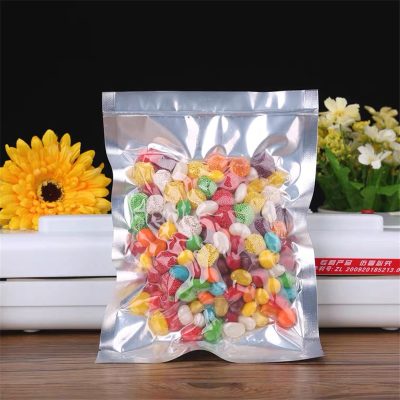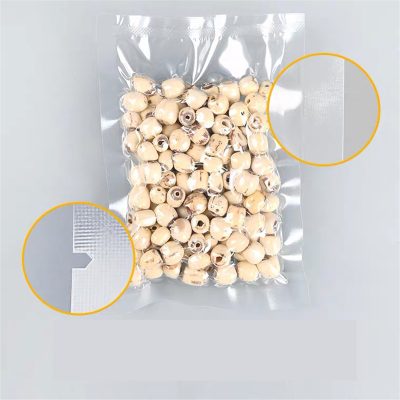In the market, vacuum packaging and vacuum air-filled packaging are mostly used to keep food fresh. In order to preserve the food, in addition to controlling the external temperature and sterility, it is more important to control the proper gas environment of the food, select the appropriate packaging materials, and the vacuum packaging bag can achieve the expected preservation purpose.
There are several kinds of materials for vacuum packaging bags, one is aluminum foil vacuum packaging bags, which are often used in food packaging; the other is polyvinylidene chloride, which is a packaging bag for meat products such as ham; There are polyethylene and polyvinyl chloride. When these two materials are processed, some additives must be added to make food vacuum packaging bags.
The excellent characteristics of vacuum packaging bags include:
1. It has strong air barrier performance, limited prevention of oxidation, and can also be waterproof and moisture-proof, which can well ensure that the food in the bag is not damp or deteriorated;
2. Strong mechanical properties, high performance in blast resistance and puncture resistance and tear resistance;
3. High temperature resistance (121°C), low temperature resistance (-50°C), oil resistance, and good aroma retention of food;
4. It is safe and tasteless, environmentally friendly and hygienic, in line with China’s food and drug packaging hygienic standards;
5. Good flexibility, good heat-seal performance, good barrier performance, suitable for food preservation.
It is the advantages of so many vacuum packaging bags above that make vacuum packaging bags very versatile.
1. In the packaging of various circuit boards, electronic products, precision machinery parts, consumer goods, industrial products, etc.;
2. In food packaging, such as pesticide packaging bags, washing powder packaging bags, bread packaging bags, health care products packaging bags, etc. The high-barrier aluminum foil bag meets the needs of fatty food for high oxygen and oil barrier properties. It not only has the function of ensuring food, but also reduces the amount of plastic when packaging the same amount of food.




















